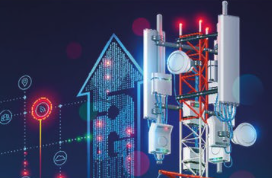
Apple embraces 5G, but challenges remain
By Dr Luyun Jiang, senior technology analyst at IDTechEx
Electronics Wireless 5G Apple iPhone wireless5G market will reach about $720 billion by 2030, says IDTechEx
Apple has integrated 5G into all four newly announced iPhones. In the launching event, Apple demonstrated a fast speed up to 4 Gbps on the iPhone 12 Pro, even when networks are crowded. The news certainly sent a positive signal to the 5G industry, but many challenges await before 5G becomes ubiquitous.

Source: IDTechEx
The new iPhones feature the most 5G bands on any smartphone and offer the broadest 5G coverage worldwide. This is an impressive achievement for smartphone design and would be extremely useful for global travelers. However, the majority will stick to a few 5G bands only. Moreover, the 5G coverage is still so low that many people are not able to use the 5G service often. The industry hopes that the fast wave of 5G smartphones will encourage the demand for 5G services and accelerate the deployment of 5G base stations in the coming years. A recent IDTechEx report forecasts 430K new installation of 5G base station globally in 2020 and such number will boost to more than four-million in 2030.
Power consumption is another concern as 5G signal will consume significantly higher power than the 4G smartphone. This will have severe knock-on effects for battery life & management, thermal management, and mobile lifespan. This problem will become obvious for the models in the US, which support millimeter wave (mmWave), the higher frequency version of 5G (24-40 GHz).
Low-loss materials & integrated design
Another challenge for 5G technologies, especially for mmWave 5G, is the transmission loss. An IDTechEx report points out that low-loss materials and more integrated design for antennas and RF modules are becoming essential for 5G. One example is PTFE materials which have demonstrated their excellent performance at high-frequency applications and now the demand is likely to increase due to the 5G market. However, PTFE based high-frequency materials are often expensive and can present challenges in printed circuit board (PCB) production or advanced packaging process. Therefore, there is a race to develop new materials as an alternative to PTFE, such as modified thermoset materials, Polyphenylene Oxide (PPO), hydrocarbon, or even polyimide aerogel.
With profitable business models and killer applications start to emerge, 5G is expected to be one of the largest and fastest-growing markets. The entrance of Apple into the 5G competition will for sure boost the investment from telecoms and encourage faster adoption of new materials and technologies to tackle the remaining challenges.
